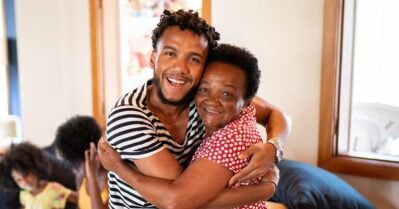A Guide to Creating Career Pathways for Young People

A new resource from Johns Hopkins University explores an effort to bolster academic and career pathways for young people. The On Track to Career Success playbook shares insights from six schools in Louisiana and New Mexico that helped to create and implement a framework for better supporting students in building skills, graduating high school and pursuing careers.
Funded by the Annie E. Casey Foundation, the playbook caters to organizations along the school-to-work continuum: secondary schools, higher education peers and workforce partners.
“The On Track to Career Success playbook translates research and best practice into action,” said Ilene Berman, director of evidence-based practice at the Casey Foundation. “The six school partners helped shape the playbook, and their work illustrates how data-informed, community-driven strategies can support students on their path to graduation and beyond.”
What is the On Track to Career Success Framework?
The On Track to Career Success (OTCS) framework serves as a customizable foundation for helping schools, educators and adults partner with and empower young people as they move through high school and into careers.
In practice, the OTCS framework has helped to improve high school graduation rates. It has also strengthened student engagement and enabled smoother transitions into postsecondary education and the workforce.
The framework is composed of three key elements:
- Milestone Tracking. High school students who achieve a series of evidence-based academic, social-emotional, college and career milestones are more likely to be on track to career success.
- Student Success Systems. Teams monitor student progress in three areas — attendance, engagement and course performance — that are well-established predictive indicators of high school graduation and college success.
- Pathways to Career Success. School and community partners work together to give all students a series of college and career explorations, experiences and engagements.
A Collaborative Effort Informed by Student Voices
Many voices and perspectives informed the OTCS framework and playbook. Students were among the project’s key collaborators, according to Sarah Gonzalez, a senior associate with the Casey Foundation. “The partners understood that this was an opportunity to build trust and center the experiences of students. Gaining their perspectives informed the changes needed to improve outcomes and it led to some very organic leadership opportunities for the young people they worked with.”
The playbook also recommends a range of tools — such as resources and team-building exercises — that OTCS partners found helpful when designing their strategies.
“The On Track to Career Success framework — co-created with students, teachers and school leaders — is designed to equip school communities with adaptable strategies they can tailor to their own circumstances,” said Bob Balfanz, director of the Everyone Graduates Center at Johns Hopkins University. “Its goal is to help schools create the support and experiences students need to stay on a pathway to career and adult success, and to ensure these opportunities are available to all students.”
Discover how the OTCS framework helped students during the COVID-19 pandemic






